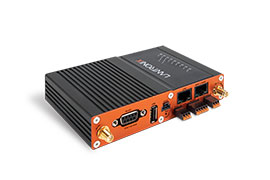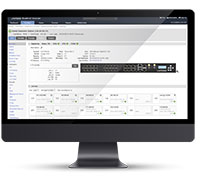Far End Fault
The purpose of the Far End Fault feature is to allow the stations on both ends of a pair of fibers to be informed when there is a problem with oneof the fibers. Without Far End Fault, it is impossible for a fiber interface to detect a problem that affects only its Transmit fiber.
When Far End Fault is supported and enabled(1), a loss of receive signal (link) will cause the transmitter to generate a Far End Fault pattern in order to inform the device at the far end of the fiber pair that a fault has occurred. When the local receiver again detects a signal, the local transmitter automatically returns to normal operation.
If a Far End Fault pattern is received by a fiber interface that supports Far End Fault and has the feature enabled, it reacts by dropping link as if there were no signal at all. If the receiving interface does not support Far End Fault or has it disabled, an incoming Far End Fault pattern is ignored.
Unless otherwise specified, a “Far End Fault” MIB variable is for configuration rather than status. In other words, it indicates whether or not Far End Fault generation is supported on the interface, and, if so, whether or not it is enabled.
On some devices, Far End Fault can only be configured via a hardware jumper. In those cases, this MIB variable is a read-only indication of how that jumper is currently set. For other devices, Far End Fault can be configured via SNMP Management. The Focal Point management application will clearly indicate which of these two cases is true by offering the opportunity to change Far End Fault only when it is possible to do so. In some cases, the embedded Web server will offer an editing opportunity when Far End Fault is not supported, but will initially display a value of “notSupported(3),” and will return a badValue error if any attempt is made to change it.
On a few devices, there is both a Far End Fault configururation variable and a Far End Fault status variable. The status variable, when present, indicates whether or not the interface is currently receiving a Far End Fault pattern from the remote. (i.e. it is an indication of the condition of the interface’s transmit fiber.) It is therefore possible for the Far End Fault status variable to read “yes(1)” even when the Far End Fault configuration variable is set to “disabled(2)“.
Far End Fault is only supported on fiber ports. On some devices (such as the CBFTF100 Switch), there is a Far End Fault MIB variable for each port, regardless of whether or not the port is a Fiber port. A read-only value of notSupported(3) is returned for both configuration and status on copper ports.
On certain variants of certain products, a chipset is used that does not support Far End Fault even on Fiber ports. In these cases, the Far End Fault indicator has a value of notSupported(3) for all ports, even Fiber ports.











